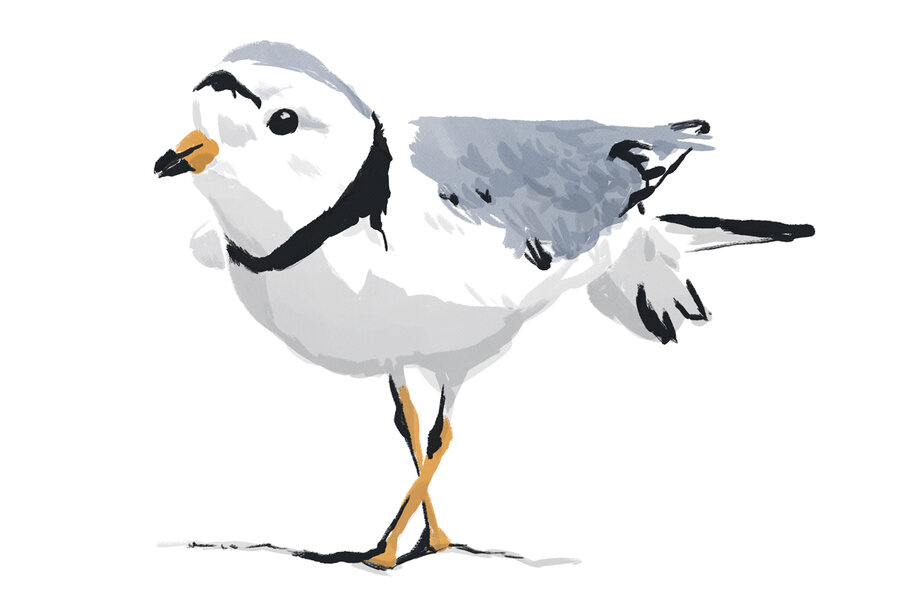Of plovers and pandemics: Reflections on resilience from Sandy Point
Loading...
| Ipswich, Mass.
The morning started with the cries of a pair of courting osprey wheeling and diving overhead.
Our species was in the throes of the coronavirus pandemic but here was nature heralding a new day.
Tide pools glittered with the golden shards of the rising sun. Last night’s winds had rolled the dunes 30 feet back, burying the boardwalk under four feet of new sand. The storm had also flattened the beach, which was gullied and strewn with piles of straw lifted off the neighboring marshes by the night’s 10-foot high tides.
Why We Wrote This
As the coronavirus pandemic disrupts nearly every aspect of human life, one writer finds comfort in the natural rhythms of the earth.
Editor’s note: As a public service, all our coronavirus coverage is free. No paywall.
But the beach is now tranquil and the tide pools reflect a more cobalt sky, noticeably lacking the contrails of aircraft thundering toward the achingly empty Logan airport.
A smattering of people walk along the shore in quiet awe of nature’s power to rework the land during a single storm.
It is shocking to look across the sound and see no one walking on Sandy Point. Massachusetts has closed its parks and beaches to ensure social distancing, and the storm has undermined another stalwart house farther up on Plum Island.
Waves had kicked surf clams out of the offshore sediments and strewn them on the shore, where seagulls were trying to figure out how to fly off with such heavy larder. I was happy to relieve them of their burden. I would add it to my stash of oysters and mussels untouched by human hands. This was my new coronavirus shopping.
Gradually I noticed the quiet whistles of a pair of piping plover, exuberant they had survived the ravages of last night’s storm. They picked through the piles of wrack line and explored the new runnels gullying the beach as their ancestors had done for hundreds of thousands of years.
Suddenly it dawned on me. Now it is these fragile piping plover who seem so resilient and well adapted to their environment. And it is we humans who seem so ill-equipped to survive this viral storm. Are we the more endangered species?
Perhaps if we learn how to mend our ways and live more lightly on the land we too may survive for another 10,000 years.
Editor’s note: As a public service, all our coronavirus coverage is free. No paywall.





